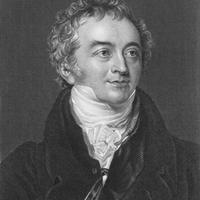What to expect
In this topic we look at oscillations of bodies that move back and forth periodically, progressive waves that transfer energy and information through space, the interference effects of these progressive waves, and other phenomena, and standing waves, where waves combine to become stationary (and therefore transferring no energy at all).
After studying this topic, you should be able to:
- Describe simple harmonic motion as an example of an oscillation, dispersion and guitar string frequencies
- Discuss how a force that is proportional to displacement and in the opposite direction results in an oscillation
- Distinguish simple harmonic oscillations from others
- Connect oscillations and waves
- Consider the formation of waves from wavelets
And at Higher Level there is more of all of this in the form of the Doppler effect, the equations involved in simple harmonic motion, single slit diffraction, resolution, and multiple slit and thin film interference.

Key questions
What is the frequency of an oscillating body?
Frequency is the number of complete cycles passing a point per second or the number of waves produced every second. Find out more.
What are some examples of simple harmonic motion?
A mass oscillating on a spring is an example of simple harmonic motion. Simple pendula are another example. Find out more.
What are the main types of waves?
In a transverse wave, the direction of displacement is perpendicular to the direction of propagation. In a longitudinal wave, the direction of displacement is parallel to the direction of propagation. Find out more.
What is the Doppler effect?
The Doppler effect is the change in frequency in observed sound due to relative motion between source and observer. Find out more.
What is meant by diffraction and interference?
Diffraction is the spreading out of a wave when passing through a gap in a boundary. Find out more.
Interference is when two waves of the same type meet and they combine to construct and destruct one another. Find out more.
What do you mean by resolution in optics?
Two points are resolved if the principal maximum of one diffraction pattern coincides with the first minimum of the other. Find out more.
What affects thin film interference?
Thin film interference is a result of the combination of the different wavelengths of light and the different distances travelled through the film. The conditions for constructive and destructive interference depend on the thickness of the film, the refractive index of the film and the wavelength of light. Find out more.

Oscillations
An oscillation is a movement through a full cycle.

Waves
A wave is a transfer of energy or information using oscillations of a medium, without moving the particles of the medium themselves. Waves can be modelled mathematically and have a number of different properties.

AHL Waves
What is the Doppler effect? What are the equations for simple harmonic motion? How is the diffraction pattern formed for light passing through a single slit? What affects the interference patterns for two or more slits? What is thin film interference?


 Twitter
Twitter  Facebook
Facebook  LinkedIn
LinkedIn